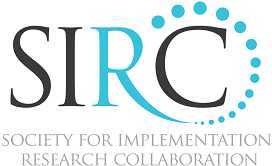A New Model for Training an Evidence-Based Practice for Suicidal Risk
Saturday 2:30 – 3:45 Breakout F4
Presentor: David A. Jobes, Ph.D.
David A. Jobes, Ph.D., The Catholic University of America
The Collaborative Assessment and Management of Suicidality (CAMS) is an evidence-based clinical intervention for effectively treating suicidal risk (Comtois et al., 2011; Jobes, 2006; 2012). CAMS is best understood as a clinical framework that uses a multi-purpose assessment, treatment-planning, tracking, clinical outcome tool called the Suicide Status Form (SSF). CAMS is designed to establish a strong therapeutic alliance and patient motivation as the treatment dyad collaboratively develops a suicide-specific stabilization plan and the treatment of patient-defined suicidal “drivers??? (problems that put the patient’s life in peril). After 20 years of training in CAMS (and the related use of the SSF), it has become clear that standard didactic training does not sufficiently change clinician behaviors to adherently use CAMS. To this end, a whole new CAMS training model has been developed and will be rigorously investigated in the years ahead. The new model includes: a highly interactive 4 hour foundational e-learning course on CAMS + 1.5 days of role-play training + 4-8 sessions of clinical case consultation. This presentation will review the evolution of training in CAMS and a program of research to understand how to best change clinician behaviors for using an evidence-based treatment that is designed to save lives.
Adaptation of Coordinated Anxiety Learning and Management (CALM) for Comorbid Anxiety and Substance Use Disorders: Delivery of Evidence-Based Treatment for Anxiety in Addictions Treatment Centers
Saturday 2:30 – 3:45 Breakout F4
Presentor: Kate Wolitzky-Taylor
Kate Wolitzky-Taylor, University of Southern California; Richard Rawson, UCLA; Richard Ries, University of Washington; Peter Roy-Byrne, University of Washington; Michelle Craske, UCLA
Introduction: The majority of individuals with comorbid anxiety and substance use disorders who receive treatment are treated for their addiction in specialty clinics but do not receive treatment for their anxiety disorders, which are associated with poorer substance use treatment outcomes and greater disability than those with substance use disorders only. The present study aimed to develop and evaluate an adaptation of a computerized, therapist-directed CBT program for anxiety disorders (CALM) to increase access to EBTs for anxiety in this comorbid population.
Methods: In the current effectiveness/implementation hybrid study, the CALM program was adapted to to be suitable for delivery in addictions treatment centers. After training addictions treatment counselors to deliver the treatment, we conducted a randomized clinical trial comparing usual care at the addiction clinic (UC) to UC + CALM adaptation. Currently, 49 patients at the community clinic with comorbid anxiety and substance use disorders have been randomized. Outcomes (measured at baseline, post-treatment, and 6-mo follow-up) include measures of feasibility, acceptability, and anxiety and substance use symptom outcomes.
Results: Therapists demonstrated competency in delivering the treatment. At post-treatment, patients in CALM ARC report greater satisfaction with treatment, improvements in quality of life, fewer drinking days in the past month, and had greater percentages of negative urinalysis (66% v. 45% in UC). Contrary to hypothesis, the differences in anxiety symptoms do not attain statistical significance between groups.
Discussion: Although the study is still ongoing, findings thus far suggest (a) delivery of CBT for anxiety in addictions counseling centers is feasible and acceptable; and (b) benefits on a variety of outcomes have been observed at post-treatment. We await additional data to draw conclusions about our 6-month follow-up assessment.
Opportunities and Challenges of Measuring Program Implementation with Online Surveys
Saturday 2:30 – 3:45 Breakout F4
Presentor: Dena Simmons
Dena Simmons, Yale University; Catalina Torrente, Yale University; Lori Nathanson, Yale University; Grace Carroll, Yale University
We will present descriptive results from data collected to assess the implementation of RULER, a K-8th school-based approach to social and emotional learning. School implementation teams, consisting of counselors, teachers, and school leaders, attended RULER institutes in 2013 or 2014. Implementation data were collected 18, 12, or 6 months post-training.
We used online surveys to reduce costs and to provide the RULER training department with timely information about progress and barriers to implementation.
Seventy-three percent of eligible schools took the survey (n = 52; 76 educators, 42% response rate). Most respondents were principals/assistant principals (32%) or teachers (26%).
Most schools (88%) implemented RULER since attending the training. On average, these schools implemented 6.7 out of 10 possible RULER activities. The most commonly endorsed activities were conducting at least one staff training (94%), teaching a lesson to students (89%), and scheduling staff trainings (89%). The least implemented activities were establishing a problem-solving process (28%) and scheduling an introductory meeting with families (44%). Generally, respondents perceived finding time for implementation as the most common barrier followed by a lack of a clear implementation plan. We will discuss how this data collection experience informed changes to our implementation support model.
